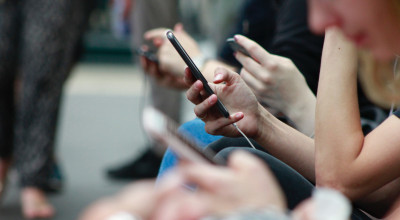Social Media Distress and Addiction
January 8th, 2024
By P. Casey Arrillaga, LCSW, LCDC
It is well known that social media has become a ubiquitous part of daily life for billions of people worldwide. For many of them, this is a great way to stay in touch with friends and family, and it is sometimes a place to make new friends and business contacts. But for some people, social media is a source of stress and social anxiety, and it can become a full-blown addiction. This post will explore these issues and what can be done.
What We Know So Far
Social media use has become an increasingly serious issue as the presence of social media in our lives has become more and more prevalent. In 2023, just under 5 billion people used social media of one type or another, and some estimates expect that number to get closer to 6 billion in the next three years. The average user is on multiple social media platforms such as Facebook, YouTube, TikTok, X (formerly Twitter), and more, the point that people interact with 6-7 social media platforms per month. Two of the biggest, Facebook and YouTube boast 2.9 and 2.5 million users per month each.
The dominant business model for these social media platforms is that they are free to the user and make their money through advertising, which means that social media users are bombarded with ads that are highly targeted to them based on all the personal data that users give away through using them. This is not just the user’s name, birthdate, address, etc. that they input when they sign up. It is the carefully compiled statistics of every tiny action a person takes (or doesn’t) as they use the social media app. This includes everything that gets attention, such as how long a person stops to look at a given social media post, what they indicate they like, what they ignore, whose posts they favor or scroll past. All of this data is used to tailor what the app shows the consumer in order to keep them as engaged as possible, triggering each users reward system as often and effectively as possible to keep them on the app.
In other words, social media platforms are deliberately designed and engineered to be as addictive as possible, and to constantly and automatically become more addictive as the user continues to interact with them. To make matters worse, this is not only done by showing users content that brings pleasure, but also things that stir up fear and anger, as these are arguably our most powerfully motivating emotions.
What users don’t always realize is that advertising is not only done through obviously paid ads seen in their social media feed, but that much of the content in the app is also advertising of one sort or another. Some of this is done by corporations and small businesses that recruit users to create content that seems personal but is in fact meant to promote a given product. Some is done by political parties and ideologically-driven groups that encourage people to post things that promote a certain point of view. Much is done by individual users who are advertising themselves and building their “personal brand” by carefully curating their image through posts that make them seem better than most people: “Look where I am. Look who I’m with. Look at how good I look. Look at the fun I’m constantly having.”
All of this can have a terrible effect on the end user, who is bombarded with images that manipulate their emotions in order to influence their behavior. It is well worth noting that the most popular people on social media are known as “influencers,” and that 50% of younger people trust influencers most for information and product recommendations.
In the case of adolescents, who are most vulnerable to social media influence, the influencers can be the biggest source of anxiety whether they wanted to be or not. Teens compare themselves to the images they see and find themselves coming up short. They may not realize how manipulated and manipulative those posts are. They only know the anxiety they feel when they see other adolescents and young adults who seem more attractive, more popular, funnier, etc.
This can lead to depression, anxiety, and other psychological distress, which has become an increasing threat as more and more people rely on social media rather than personal interactions for social support. Unfortunately, researchers have found that when people rely on social media for social support, it doesn't lead to better outcomes, whereas people who lean more on in-person support see improvements in their mood and thinking.
When Social Media Becomes an Addiction
Researchers have found that while social media can be bad for anyone’s mental health, it is particularly destructive for some people who nonetheless use it compulsively to the point that it is reminiscent of drug use in how addictive it can be. When any activity (gambling, drug use, etc.) causes distress and difficulties in a person's life, they see increasing use over time, they experience withdrawal when not doing the activity, and yet they feel compelled to continue, that activity can be labeled as addictive. Social media use hits all these benchmarks for many people.
Addicted social media users are more likely to experience the anxiety, depression, and distress that any user must be careful to avoid. They are more likely to see reduced ability to retain information and get lower grades when in school. They are also prone to lower self-esteem due to constantly taking in others’ self-promoting and exaggerated posts, and low self-esteem is well known to go hand-in-hand with other psychological problems.
What Can Be Done?
As more studies are being done around social media distress and addiction, there have been some promising results. Since social media addiction has so many of the hallmarks of other addictions, it shouldn’t be surprising that some of the same techniques that help with other addictions can offer some relief. One research team found that a two-week series of Motivational Interviewing and Cognitive Behavioral Therapy exercises helped a group of adolescents see a reduction in social media use and addiction symptoms. More of these exercises need to be studied and both public and mental-health professionals need to be educated about their use to help reduce the threat of social media distress and addiction.
At Windmill, all of our clients are removed from social media for most or all of their stay, but we know this will not solve the problem within itself. Many of our clients choose to stay longer and move through phases in their treatment that allow them to increasingly access their social media accounts so that they can learn to deal with the problems it can create, all while in a safe environment with professional help and guidance.
The Bottom Line
Social media is a growing part of human life. While it can be a normal part of life for some, many people experience worsening psychological problems as a result of social media use, and some become addicted. There is hope around this if more people, and particularly helping professionals, educate themselves and the public about the dangers of social media and some of the promising techniques to reduce its dangers.
About The Author
P. Casey Arrillaga is the Team Leader for Education at
Windmill Wellness Ranch, and he is the author of books including “Realistic
Hope: The Family Survival Guide for Facing Alcoholism and Other Addictions”.


